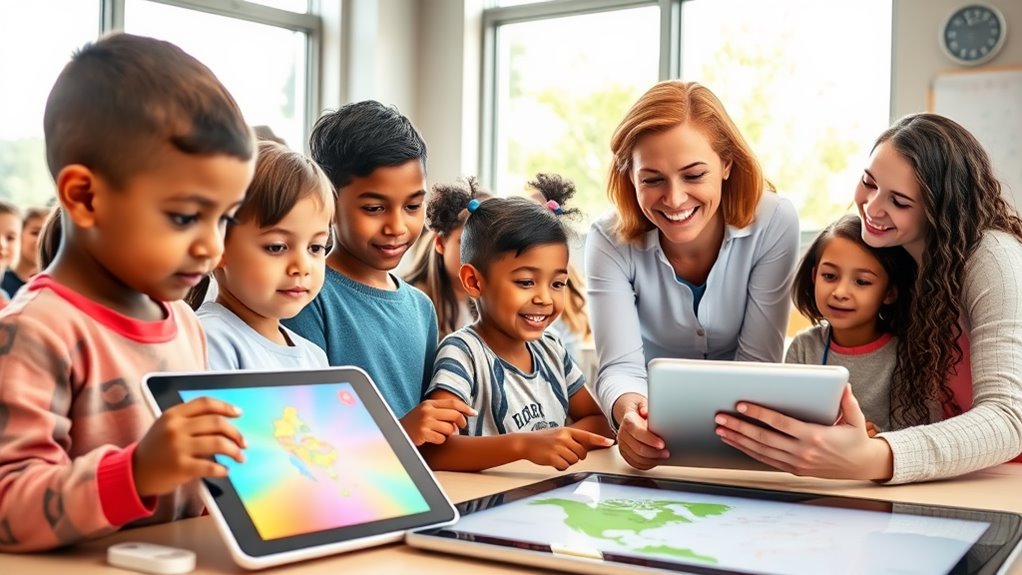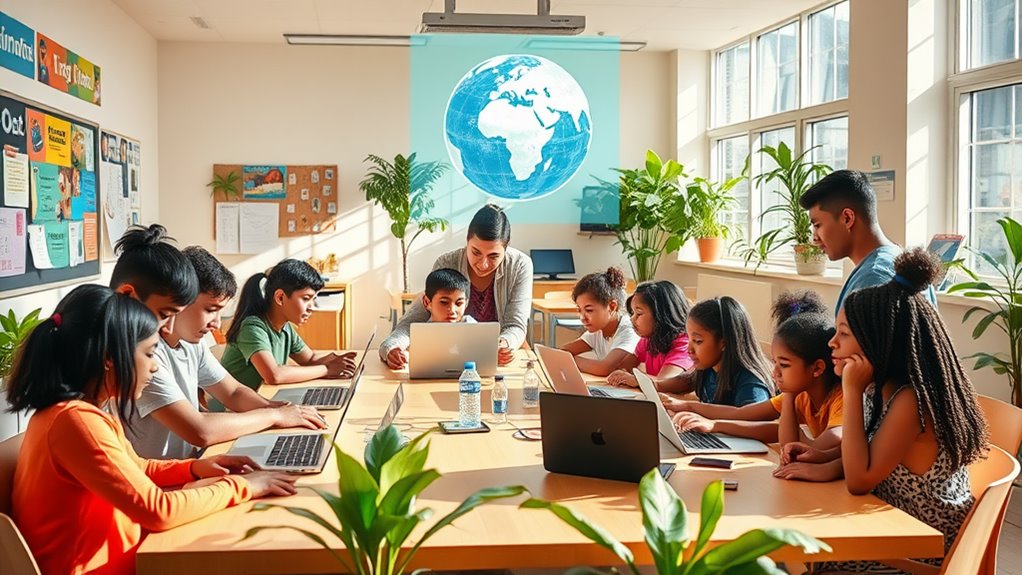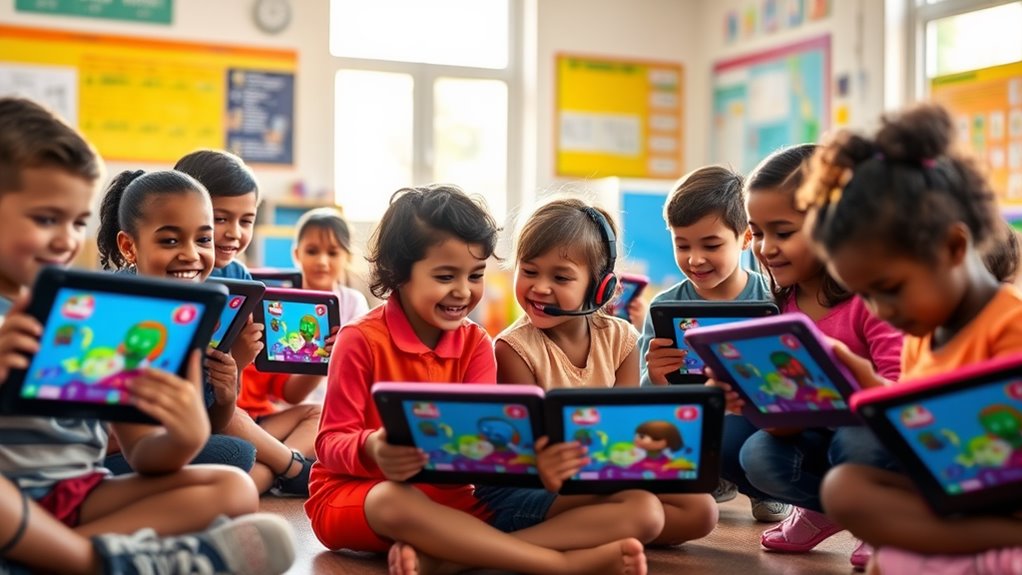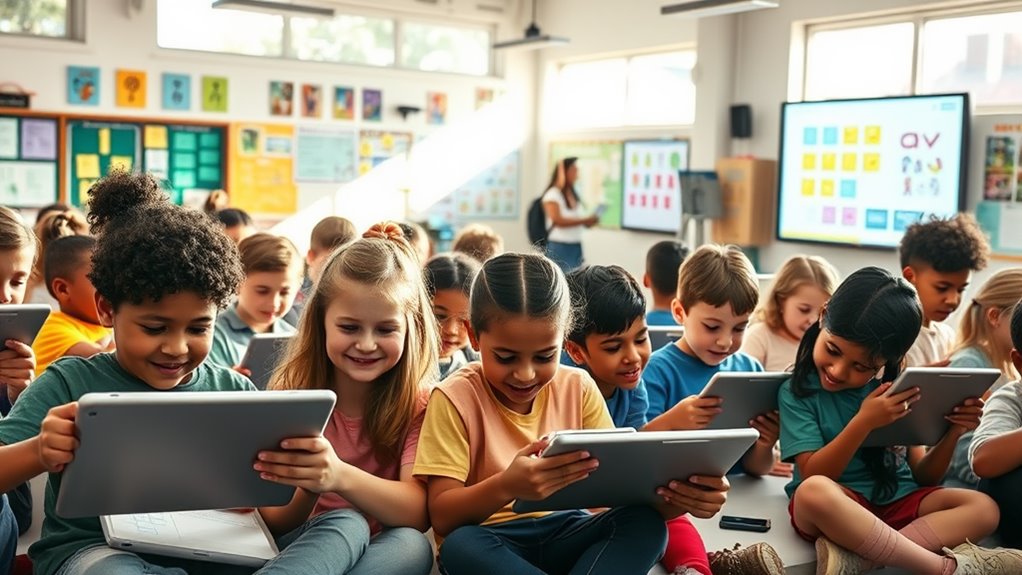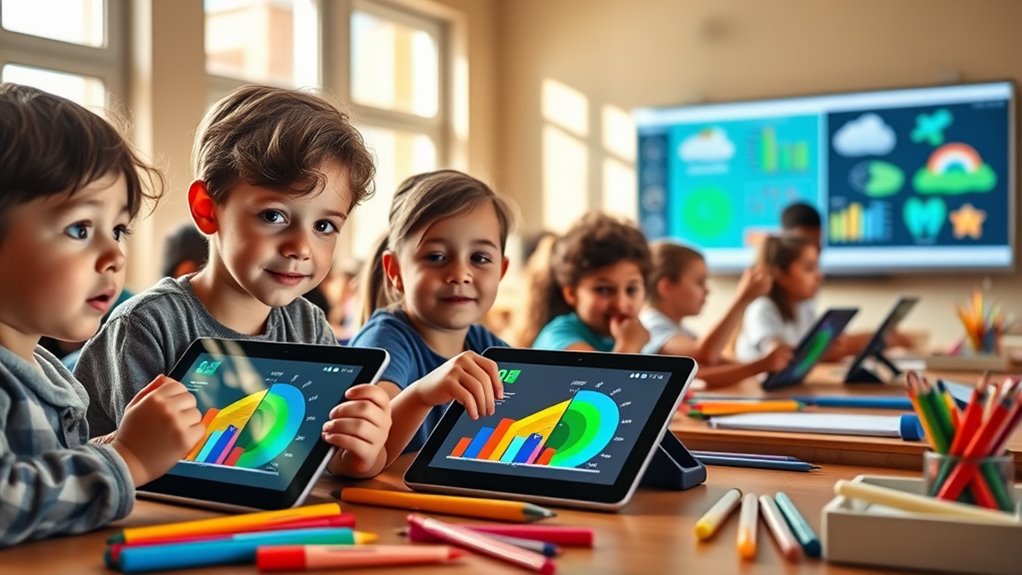How Technology Is Changing the Way Kids Learn
Technology’s changing how your kids learn in exciting ways. With interactive tools, they’re more engaged, exploring complex ideas through simulations and digital storytelling. Online resources give access to diverse materials, catering to different learning styles, while personalized experiences ensure they move at their own pace. Collaborative platforms encourage teamwork, allowing for real-time communication and peer feedback. Gamification adds an element of fun, motivating deeper exploration with rewards. Plus, virtual and augmented reality create immersive experiences that extend learning beyond traditional methods. There’s so much more to discover about these advancements that could enhance your child’s educational journey.
Key Takeaways
- Interactive learning tools enhance engagement by allowing students to explore complex concepts through simulations and digital storytelling.
- Online educational resources provide diverse materials and structured courses that cater to various learning styles and preferences.
- Personalized learning experiences empower students with adaptive assessments and targeted feedback to improve their understanding and progress.
- Collaborative learning platforms facilitate real-time communication and resource sharing, fostering teamwork skills essential for future collaboration.
- Gamification increases motivation and engagement by incorporating game mechanics like points and leaderboards, leading to better retention of knowledge.
Interactive Learning Tools
In today’s classrooms, interactive learning tools are transforming the way kids engage with educational content. These tools make learning more dynamic and enjoyable, and you’ll notice how they spark your child’s curiosity.
Interactive simulations allow students to explore complex concepts in a hands-on manner. Imagine your child stepping into a virtual lab where they can conduct experiments without the constraints of a physical classroom. This kind of immersive experience helps solidify understanding and makes abstract ideas more tangible.
Digital storytelling is another powerful interactive tool that captivates young minds. By combining narrative with multimedia elements, kids can express their ideas creatively. They can create their own stories, incorporating videos, images, and sound, which enhances their communication skills.
When your child participates in digital storytelling, they’re not just passive consumers of information; they’re active creators.
These interactive learning tools foster collaboration and critical thinking, as kids often work together on projects. They’re not merely learning facts; they’re developing skills that are essential for the future.
Online Educational Resources
Explore the vast world of online educational resources, and you’ll discover a treasure trove of materials that enrich your child’s learning experience.
These resources not only make learning more engaging but also cater to various learning styles and preferences.
Here are four valuable online resources you can consider:
-
Online Courses: Platforms like Coursera and Khan Academy offer structured courses on a wide range of subjects, allowing your child to learn at their own pace.
-
Educational Apps: Apps like Duolingo for language learning or Prodigy for math practice provide interactive and fun ways for kids to grasp complex concepts.
-
Virtual Libraries: Websites like Project Gutenberg and Open Library give kids access to thousands of free eBooks, expanding their reading options and knowledge base.
-
Video Tutorials: YouTube channels like Crash Course or TED-Ed feature short, informative videos that make challenging topics easier to understand.
Personalized Learning Experiences
As online educational resources continue to evolve, they pave the way for personalized learning experiences that cater specifically to each child’s unique needs.
With the help of technology, you can now access adaptive assessments that adjust to your child’s learning pace and style. This means that instead of a one-size-fits-all approach, your child can engage with material that challenges them appropriately, ensuring they grasp concepts before moving on.
These personalized assessments not only identify strengths and weaknesses but also provide individualized feedback that helps guide your child’s learning journey. This feedback can highlight areas where they excel and point out where they might need additional support, allowing for targeted interventions.
For you as a parent, this means having a clearer understanding of your child’s progress and the ability to celebrate their achievements while addressing any challenges.
Moreover, personalized learning experiences foster a sense of ownership in your child’s education, empowering them to take charge of their learning path.
Collaborative Learning Platforms
How can technology enhance collaboration among students? Collaborative learning platforms are revolutionizing how you interact with your peers in a learning environment. These platforms enable you to work together seamlessly, sharing ideas and resources, and ultimately boosting your educational experience.
Here are some key benefits:
-
Real-time communication: You can chat, discuss, and share files instantly, breaking down barriers of time and distance.
-
Peer feedback: Getting input from classmates on your work can provide new insights and help you improve your projects.
-
Project management tools: These features allow you to organize tasks, set deadlines, and track progress collectively, making group projects more efficient.
-
Resource sharing: You can easily exchange documents, links, and multimedia, ensuring everyone has access to the necessary materials.
Using collaborative learning platforms, you can develop essential teamwork skills that will serve you well beyond the classroom.
Gamification in Education
In recent years, gamification has emerged as a powerful tool in education, transforming traditional learning into an engaging experience. By incorporating game mechanics into lessons, you can make learning more interactive and fun. Think about how points, badges, and leaderboards can motivate you and your classmates to dive deeper into subjects that might seem dull otherwise.
When you engage with gamified content, you’re not just passively absorbing information; you’re actively participating in the learning process. This increased student engagement can lead to better retention of knowledge and a more profound understanding of concepts. You might find that solving problems or completing challenges becomes an exciting competition rather than a chore.
Moreover, gamification encourages collaboration among you and your peers. Working together to achieve goals creates a sense of community and shared purpose in the classroom. As you navigate through levels or missions, you’re building skills that are essential in today’s world—like teamwork, critical thinking, and adaptability.
In essence, embracing gamification in education can revolutionize how you learn, making it a more enjoyable and effective journey. So, get ready to level up your learning experience!
Virtual and Augmented Reality
Virtual and augmented reality (VR and AR) are changing the way you experience learning, taking education to new heights.
These technologies provide you with unique opportunities to engage with content like never before. With VR and AR, you’re not just reading about concepts; you’re stepping right into them.
Here are four key ways VR and AR enhance your learning experience:
-
Virtual Simulations: You can practice real-world skills in a safe environment, from surgical procedures to complex engineering tasks.
-
Immersive Storytelling: Engage with narratives that allow you to explore different perspectives and historical events, making learning more relatable.
-
Interactive Environments: You can manipulate 3D objects and environments, fostering a hands-on approach to subjects like science and art.
-
Collaborative Learning: Connect with peers in virtual spaces, allowing for group projects and discussions that transcend geographical boundaries.
Frequently Asked Questions
How Can Parents Support Their Kids’ Tech-Based Learning at Home?
Isn’t it ironic? You’re worried about screen time, yet those devices are learning tools. Support your kids by setting boundaries, exploring educational apps together, and fostering discussions about what they discover in their tech adventures.
What Are the Potential Downsides of Technology in Education?
While technology offers benefits, it can lead to screen addiction and social isolation among kids. You’ll need to monitor their usage and encourage balance to ensure they don’t miss out on real-life interactions and experiences.
How Do Teachers Adapt to New Educational Technologies?
Teachers adapt to new educational technologies by participating in professional development, learning to effectively integrate tools into their classrooms. They stay updated on trends and collaborate with colleagues, ensuring their teaching methods meet students’ evolving needs.
What Age Is Appropriate for Introducing Technology in Learning?
There’re age recommendations suggesting introducing technology around age 3 for learning benefits. Start with simple, interactive tools that enhance creativity and critical thinking, ensuring it complements traditional learning rather than replacing essential foundational skills.
How Do Schools Address Digital Equity Among Students?
Did you know that nearly 30% of students lack reliable digital access? Schools are striving to ensure equitable resources by providing devices and internet access, bridging the gap, and promoting equal opportunities for all learners.

